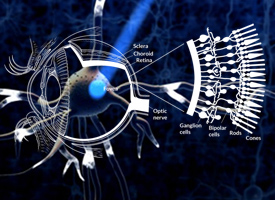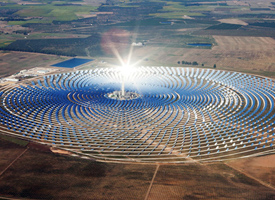 The Online Time Capsule
The Online Time Capsule
 Billions cubic meters of earth gas start "leaking" on the Gazprom-Botas "Turkish Stream"
Billions cubic meters of earth gas start "leaking" on the Gazprom-Botas "Turkish Stream"
Russia and Turkey have agreed on the route of the ‘Turkish Stream’ pipeline under the Black Sea. The first gas pipe with a capacity of 15.75 billion cubic meters will be operational by December 2016.
Six hundred and sixty kilometers of the new Turkish Stream pipeline will go through the old South Stream corridor and a further 250 kilometers will head in the direction of the European part of Turkey.
The four threads which make up the pipeline will have a capacity of 63 billion cubic meters, Gazprom said in a statement following Tuesday’s meeting between CEO Aleksey Miller and the Turkish Minister of Energy and Natural Resources Taner Yildiz.
The company will apply to carry out design and exploration work in Turkish territorial waters on Wednesday, January 28.
Russia will pay for the laying of the undersea pipeline while the capacity within Turkish territory will be developed jointly. The participating shares will be discussed at further meetings.
The Turkish government has appointed Botas as its representative company to run the project. Gazprom and Botas will prepare a joint plan for the implementation of the project within a week.
"Our priority is analyzing the route options in Turkish territory, defining an exit point from the sea, the point of delivering gas to Turkish consumers and the point of crossing the border between Turkey and Greece,” said Gazprom in a press release.
The first gas is expected to be delivered to Turkey in December 2016. Earlier in January, Gazprom’s Sergei Kupriyanov said the construction of Turkish Stream will take a little longer than South Stream which was planned to be completed by 2017.
Source: http://rt.com/business/226747-turkey-stream-gas-route/
 The Next president of USA is...
The Next president of USA is...
The Next president of USA is Bernie Sanders�����

 Volvo unleash talking to each other, self-driving cars on Swedish roads
Volvo unleash talking to each other, self-driving cars on Swedish roads
Warning other cars about a slippery road
Volvo Cars is joining Swedish transportation officials in a pilot project in which road friction information from individual cars is shared within a cloud-based system. When the test car detects an icy or slippery road patch, the information is relayed via Volvo Cars' database to other vehicles approaching the slippery area. The information is also sent to the transportation officials, enabling the officials and contractors to quickly remedy the problem.
Volvo Cars' Drive Me pilot program announced last week will push autonomous driving a step closer to reality by putting 100 self-driving XC90 crossovers on Swedish streets by 2017.
The vehicles will be driven by ordinary people in Volvo's home city of Gothenburg using a controlled 31-mile route. They'll be used for daily commuting on roads with a barrier between the lanes and operate "in real traffic in a real situation," the company said.
The trial will run until the spring of 2019.
"We are entering uncharted territory in the field of autonomous driving," said Peter Mertens, senior vice president of r&d at Volvo Car Group. "Taking the exciting step to a public pilot, with the ambition to enable ordinary people to sit behind the wheel in normal traffic on public roads, has never been done before."
Volvo is collaborating with Swedish authorities. The cars will be leased to drivers, but they won't be charged for the full cost of the technology. Volvo experts discussed the project during an Internet press conference.
New autopilot system
The autonomous vehicles will use a network of sensors, cloud-based positioning systems and intelligent braking and steering technologies. They'll use a new Volvo autopilot system that allows the vehicle to take over steering, turning, braking and parking. The trial will run on specific public roadways "without oncoming traffic, cyclists and pedestrians," Volvo said.
"It is relatively easy to build and demonstrate a self-driving concept vehicle, but if you want to create an impact in the real world, you have to design and produce a complete system that will be safe, robust and affordable for ordinary customers," said Erik Coelingh, a Volvo technical specialist.
The driver will be able to take control in critical situations, Volvo said.
Volvo said it has built in fail-safe systems, similar to those in the aircraft industry, so that the autopilot system continues to work if an element is disabled. For instance, the vehicles will have a second, independent brake system.
The system also will prompt the driver to take over during "exceptional weather conditions, technical malfunction or the end of the route," Volvo said. "If the driver is incapacitated for any reason and does not take over in time, the car will bring itself to a safe place to stop."
Car-to-car communication
Vehicles communicating with each other and with road signs, traffic lights and other infrastructure enables vital information to be shared -- creating a more comfortable and safer drive. The technology is based on communication between transmitters in vehicles and the road infrastructure, and makes it possible to transmit information about local icy or slippery road patches from one car to other vehicles.
U.S. is 'interesting'
Volvo executives didn't say what countries they'll target for sale of autonomous vehicles but indicated "the U.S. is an interesting market for autonomous drive."
"The customer demand is high -- commuters in megacities -- road conditions are appropriate, and the authorities are positive," said Karl-Johan Runnberg, director of government affairs for Volvo Cars.
Runnberg said the cost of an autonomous-driving system won't be much higher than that of today's active-safety and driver-support systems. Volvo will disclose which suppliers it is working with closer to launch, he said.
The 2016 XC90 that goes on sale in May already has some of the systems -- including three radar systems and four cameras. The sensor technology and algorithms will be reused for the self-driving cars.
Volvo experts said the technology for the pilot project is "producible in the near future."
"By putting it into the real world, we will find limitations, we will learn and we will adapt," said Coelingh. "Within this limited scope, we can verify if it is safe."
The vehicles will have data recorders similar to an airplane's black box so Volvo can determine the cause if a crash occurs.
Source: http://www.autonews.com/article/20150301/OEM06/303029948/volvo-to-unleash-self-driving-cars-on-swedish-roads������

 First patient with Degenerative Retinal Disease is cured by The Optogenetics Gene Therapy
First patient with Degenerative Retinal Disease is cured by The Optogenetics Gene Therapy
A man who had been blind for 50 years allowed scientists to insert a tiny electrical probe into his eye.
The man’s eyesight had been destroyed and the photoreceptors, or light-gathering cells, at the back of his eye no longer worked. Those cells, known as rods and cones, are the basis of human vision. Without them, the world becomes gray and formless, though not completely black. The probe aimed for a different set of cells in the retina, the ganglion cells, which, along with the nearby bipolar cells, ferry visual information from the rods and cones to the brain.
No one knew whether those information-relaying cells still functioned when the rods and cones were out of service. As the scientists sent pulses of electricity to the ganglion cells, the man described seeing a small, faint candle flickering in the distance. That dim beacon was a sign that the ganglion cells could still send messages to the brain for translation into images.
That 1990s experiment and others like it sparked a new vision for researcher Zhuo-Hua Pan of Wayne State University in Detroit. He and his colleague Alexander Dizhoor wondered if, instead of tickling the cells with electricity, scientists could transform them to sense light and do what rods and cones no longer could.
The approach is part of a revolutionary new field called optogenetics. Optogeneticists use molecules from algae or other microorganisms that respond to light or create new molecules to do the same, and insert them into nerve cells that are normally impervious to light. By shining light of certain wavelengths on the molecules, researchers can control the activity of the nerve cells.
Optogenetics is a powerful tool for probing the inner workings of the brain. In mice, researchers have used optogenetics to study feeding behavior , map aggression circuits and even alter memories.
After years of work with animals, researchers are now poised to insert optogenetic molecules into the retinal cells of people. The aim is to restore vision in those whose rods and cones don’t work.
“It makes sense that the organ that is light sensitive would benefit from [optogenetics] first,” says José-Alain Sahel, director of the Vision Institute in Paris. He is involved in one of two efforts to bring optogenetics out of the lab and into the eye clinic.
Optogenetics is, at its heart, a gene therapy. Traditional gene therapy places a healthy copy of a mutated or damaged gene into the cells of a person with an inherited condition. The healthy copy is first packed into a virus. The virus delivers the gene to the “broken” cells and unloads its cargo. Once inside the cell, the gene produces functional copies of the proteins that the original mutations damaged, and the cell starts working again.
The inherited blindness called Leber congenital amaurosis, however, is the absolute best-case scenario for gene therapy, says neuroscientist Botond Roska. LCA patients eligible for gene therapy still have light-gathering rods and cones in their retinas but the cells don’t work properly because they have a mutation in a gene called RPE65 (one of a dozen gene mutations that can cause LCA). Introducing the normal version of the gene allows the rods and cones to function again. However, two studies published online this month in the New England Journal of Medicine suggest that even in patients who experience vision improvements after gene therapy for LCA, the photoreceptors continue to die and vision deteriorates over time. This could mean that, for long-term benefit, another approach is needed.
Most people with inherited blindness don’t even have the hope of temporary restoration. Mutations in any of more than 250 genes may lead to blindness, says John Flannery, a cell and molecular biologist at the University of California, Berkeley. Gene therapy is currently impractical or impossible for most of those diseases, he says.
Approximately 200,000 people in the United States have inherited retinal diseases that affect the rods and cones, according to estimates from the Foundation Fighting Blindness. Once those photoreceptors are gone, there’s no bringing them back, says Roska, of the Friedrich Miescher Institute for Biomedical Research in Basel, Switzerland.
The optogenetics approach that Pan and others are studying circumvents the missing photoreceptors. That means it differs from traditional gene therapy in important ways: It doesn’t fix broken genes, so the therapy should work regardless of which of the 250 genes are causing problems. And instead of trying to resurrect dead or damaged photoreceptors, the scientists aim to transform relay cells into ersatz photoreceptors.
Pan and Dizhoor began kicking around the idea of making bipolar and ganglion cells light sensitive in 2000.The breakthrough came two years later when scientists discovered a light-responsive protein called channelrhodopsin in a single-celled algae called Chlamydomonas reinhardtii.
Channelrhodopsins form channels in a cell’s outer membrane. When certain wavelengths of light hit the protein, the channel opens and lets positively charged ions flow into the cell. That flow of energy is a nerve cell’s signal to talk to its neighbors and to the brain. Pan and Dizhoor immediately recognized its potential.
“We thought, ‘Wow! This is the molecule we’ve been waiting for,’ ” Pan says.
They lost little time packing a gene encoding a specific channelrhodopsin, ChR2, into a virus that could infect ganglion cells in blind mice. The researchers reported in Neuron in 2006 that the protein could make the cells light sensitive and send a message to the brain in response to blue light shone into the eyes of the mice.
Studies in people could begin next year.
Full Source: https://www.sciencenews.org���

 The Steam Machine Smach Zero smashes the competitors in the battle for the best portable PC
The Steam Machine Smach Zero smashes the competitors in the battle for the best portable PC
If you've ever wanted to take your Steam library of PC games on the road, soon you'll be able to buy a device capable of doing just that. The Smach Zero, a portable Steam machine, now has an official release date and price.
Previously known as the Steam Boy, the Smach Zero will launch in quarter four (October-December) of 2016, and pre-sales will be available starting November 10. If you preorder it, it'll cost you $299. The company states that this price is only for preorders, and it'll cost a bit more if you wait until later to buy it.
In terms of form factor, the Smach Zero looks like a cross between a Vita and a Steam controller. It has an embedded screen flanked by two of the distinctive Steam controller circle pads, with four buttons on each side. The gamepad is configurable, as well, to suit different games.
The device has 4 GB of RAM, a 720p touchscreen, HDMI output, Bluetooth and Wifi connectivity, and 32 GB internal storage. As a Steam machine, it runs Valve's SteamOS, an operating system designed specifically to run Steam.
Other companies have also attempted to create portable PCs capable of playing your Steam games, with varying degrees of success. Razer, for example, opted to focus on fitting a lot of power into a small device and made the Edge tablet, which gives players the ability to play pretty much any game at moderate settings. The tablet, however, has a very short battery life when running games.
Source: http://www.gamespot.com/���������
 Views : 1134
Owner: King Smo'
Views : 1134
Owner: King Smo'
 the price of Bitcoin 2016
the price of Bitcoin 2016
Bitcoin will be worth 500$ and we will be rich!�

 World's most colossal solar park Quaid-e-Azam lights up the Pakistan's future
World's most colossal solar park Quaid-e-Azam lights up the Pakistan's future
Some 400,000 solar panels, spread over 200 hectares of flat desert, glare defiantly at the sun at what is known as the Quaid-e-Azam Solar Power Park (QASP) in Cholistan Desert, Punjab, named after Pakistan’s founding father, Mohammad Ali Jinnah.
The 100MW photovoltaic cells (PV) solar farm was built by Chinese company Xinjiang SunOasis in just three months, and started selling electricity to the national grid in August.
This is the first energy project under the $46 billion China-Pakistan Economic Corridor (CPEC), a key part of China’s ‘new silk road’, linking the port at Gwadar in southern Pakistan with Kashgar in China’s western region of Xinjiang.
The 100MW plant is the pilot stage of a more ambitious plan to build the world’s largest solar farm. Once completed in 2017, the site could have capacity of 5.2 million PV cells producing as much as 1,000MW of electricity – enough to power about 320,000 households. Construction of the next stage is already underway, led by another Chinese company Zonergy.
Eighteen months ago, the site was nothing more than wilderness. Now a mini city has emerged in the middle of the desert, with over 2,000 workers accompanied by heavy machinery, power transmission lines, blocks of buildings, water pipes and pylons.
Reducing emissions, providing livelihoods
The Cholistan desert is an ideal spot for solar power, said Muhammad Hassan Askari, operating manager of the solar park. The area gets 13 hours of sunlight every day while the huge expanse of flat desert is ideal for a large commercial project like this one.
The big advantage of solar power, he said, is that a large park can be completed faster than thermal or hydropower projects, which take much longer and require a lot of maintenance.
The solar park will also shrink Pakistan’s carbon footprint, said Najam Ahmed Shah, the chief executive officer of QASP, displacing about 57,500 tonnes of coal burn and reducing emissions by 90,750 tonnes every year.
Pakistan aims to reduce its reliance on hydrocarbons, especially imported coal, oil and gas, to around 60 per cent by 2025 from the present 87pc. The country has a target to produce 10pc of its total energy mix from renewable sources (excluding hydro-power, which already constitutes 15pc of the total energy mix). The current generation from renewable energy is around 1-2pc.
While Pakistan contributes less than 1pc to global Green House Gas (GHG) output, the country’s carbon emissions are growing by 3.9pc a year. By 2020 it will spew out 650 million tonnes of Co2e (carbon dioxide equivalent) if the current trend continues, said climatologist Qamar-uz-Zaman Chaudhry, the UN secretary general’s special advisor for Asia with the World Meteorological Organisation (WMO).
The solar park will also eventually generate 15,000 to 33,000 jobs for locals and attract investment to the region.
Unprecedented scale
Some experts worry the project is too ambitious. Former director general of WWF-Pakistan Ali Hassan Habib, who now runs a company providing rooftop solar solutions, welcomed the project but was uneasy about the government “jumping into untested scale”. The plant will be double the size of the existing largest solar PV generating facilities worldwide, he said.
“It may have been better to build the equivalent remaining 900MW closer to where electricity is consumed — on say the rooftops of large parking lots — rather than installing it in remote locations,” he said.
Environmental impact of clean energy
Because solar energy is still finding a foothold in the energy mix and technologies are evolving, not enough is known about the park’s impact on the environment and natural resources.
Some negative impacts have already become apparent. For example, solar power consumes lots of water. PV panels may require little maintenance, according to QASP, but they need to be kept squeaky clean. An estimated one litre of water is used to clean each panel. Water consumed to clean the eventual 5.2 million panels built will be colossal for a country that is fast becoming water stressed. Currently, 30 people take 10 to 15 days to clean the 400,000 cells.
“This year we’ve been very lucky as there have been unprecedented rains and so panels were cleaned automatically,” said Askari.
The construction of a new road network and supporting commercial activities associated with large solar PV projects do leave a substantial “footprint” on the land, agreed Habib.
Shah justified the project, saying it was built on “uninhabited” “waste” land. “An Initial Environmental Examination was carried out and we got a nod from the Environment Protection Department before embarking upon the project,” he explained.
To offset any negative impact, Habib suggested the government set up an “environment and social fund”.
Environmentalists are also concerned about the fate of the millions of PV panels which will wear out within 25 years. The panels will have to be recycled to extract the silicon used to make them, and then replaced.
Political risks
With just a little over two years left in his term, the success of the solar project is important for Prime Minister Nawaz Sharif.
“The project has huge political implications for the ruling Pakistan Muslim League (N),” said Lieutenant Colonel (Ret) M Hassan Malik, who is responsible for the security arrangements of the entire QASP area.
”Through this project the government also wants to send out the message to the outside world that it has the capacity to undertake mega projects and will provide foolproof security to investors.”
Working in an area known as a hotbed of criminals and extremists, Malik’s job is challenging. “Not only is the park a national asset, we have foreign nationals working at the plant, so the sensitivity is two-fold,” he said.
There are 800 to 900 men guarding the site, where around 400 Chinese workers and over 2,000 labourers work at any given time.
Source: http://www.dawn.com/���������

 World’s largest 'ship' Prelude, which is bigger than the Empire State Building, takes to the water for first time
World’s largest 'ship' Prelude, which is bigger than the Empire State Building, takes to the water for first time
South Korean shipbuilder Samsung Heavy Industries floated partially built tanker-shaped vessel - Prelude - at its southern shipyard in Geoje
Liquefied natural gas platform cannot be called a ship as it is unable to move under its own steam and must be towed
Vessel's storage tanks have a capacity equivalent to approximately 175 Olympic swimming pools
Commissioned by Dutch energy giant Shell, the facility is due to be delivered by September 2016
Prelude will operate in a remote basin around 295 miles northeast of Broome, Australia, for around 25 years
Pity the poor deck hands on this monster. Its bow and stern are half a kilometre apart and you could fit four football pitches onto it.
Now, the world's largest 'floating facility', which is longer than the height of the Empire State Building, has taken to the water for the first time.
South Korean shipbuilder Samsung Heavy Industries floated the partially built tanker-shaped vessel - named Prelude - at its southern shipyard in Geoje on November 30.
The 1,601ft -long (488m) floating liquefied natural gas (FLNG) platform cannot be described as a ship because it is unable to move under its own steam and must be towed.
But its specifications are impressive, outstripping the 1,453ft (443m)-tall Empire State Building in New York.
Once complete, the facility will weigh more than 600,000 tonnes fully loaded, displacing the same amount of water as six of the world's largest aircraft carriers.
And at 242ft wide and 360ft high, it is expected to produce 3.6million tonnes of LNG a year - and its storage tanks have a capacity equivalent to approximately 175 Olympic swimming pools.
Commissioned by the Dutch energy giant Shell, the vessel is due to be delivered by September 2016.
In a press release on its website, Shell said Prelude would operate in a remote basin around 295 miles northeast of Broome, a town in Western Australia, for around 25 years.
It is an all-weather facility designed to withstand the most powerful category-five cyclone.
Which is just as well as it will be producing enough gas to supply a city the size of Hong Kong.
As Prelude leaves dry dock for the first time, developer Royal Dutch Shell wants to consolidate its advantage as the first mover in floating liquefied natural gas - an as-yet untried technology for which Prelude will be the flagship.
The oil company's technicians are designing something even larger and tougher than Prelude, a vessel that will need to last 25 years moored in the Indian Ocean's 'cyclone alley' off Australia's northwest coast.
'Yes we will move bigger and move into more extreme environments,' said Bruce Steenson, Shell's general manager of integrated gas programmes and innovation.
'We are designing a larger facility. That will be the next car off the rails.'
Prelude, which analysts says may cost over £7billion ($12bn) to build, is a potential game changer for the oil and gas industry. Escalating costs forced backers to dump their original, land-based LNG plant plans, and in September this year, they decided to go ahead with Shell's FLNG technology instead. Browse's developer, Woodside Petroleum, said in October it may use as many as three of the FLNG vessels that Shell is developing along with Samsung Heavy and oil and gas engineers Technip.
An even bigger FLNG plant than the ones to be built for Prelude and Browse could make life more interesting for the competition.
Source: http://www.dailymail.co.uk/news/article-2518943/Worlds-biggest-ship-Prelude-takes-water-time.html����������

 First tests on humans wth ET-D5 : Molecule that could kill tumor cells and treat cancer
First tests on humans wth ET-D5 : Molecule that could kill tumor cells and treat cancer
For many years, researchers are looking for remedies to cure cancer. Today is Aurélie Juhem, a researcher in the Grenoble laboratory Ecrins Therapeutics, which could have found an effective way to kill cancer cells.
As early as the 1900s, it was already possible to cure patients with cancer. It is of course reminiscent of Coley toxins that have been invented by Dr. William Coley and allowed to cure a terminal cancer in only three months in most cases. Today, other scientists are trying to find cures for cancer and results begin to emerge.
If scientific laboratory Architecture and Reactivity of RNA were able to divert the AIDS virus to more effectively combat cancer, a French researcher was able to find a molecule capable of stopping and killing cancer cells in certain types of cancer . Called ET-D5, this molecule with anti-cancer properties "has the ability to stop the division and proliferation of tumor cells, and destroy the vessels that have formed and that feed the tumor."
Thus, tumors may be destroyed due to this molecule, blocking their development and their blood supply, without damaging the organs affected by the tumor. For now, this molecule has only been tested on mice and the results are very promising. Aurélie Juhem can not do tests on humans now because it needs at least 500,000 euros in order to toxicological tests.
If the toxicity tests are conclusive, these drugs will be sold to a lab to produce the drug. They can then offer this drug to patients in the cancer center Léon Bérard in Lyon since 2016. This drug appears to be more effective on liver cancer, pancreas or kidney.
Source: http://www.depotekk.com/2015/02/et-d5-molecule-that-could-kill-cancer.html
Official website of the Ecrins Therapeutics Project: https://www.wiseed.com/en/startups/ecrins-therapeutics����

 Opening of the World's first robots theme park: "ROBOT LAND" in Incheon, South Korea
Opening of the World's first robots theme park: "ROBOT LAND" in Incheon, South Korea
In 2009, we heard that South Korea was working on some sort of massive robot theme park that was scheduled to open in 2012. And then, we kind of didn't hear anything for a very, very, very long time. Now that it's 2014, Robot Land is back in the news and apparently actually really seriously no kidding getting built. Yay!
After years bogged down in environmental reviews (there's a stream that probably had some sort of endangered microbe in it on the build site), Masan Robot Land officially broke ground right about here in December of last year. The first phase of construction will include a robot research and development center, a convention center, a robot exhibition hall, and (most importantly) robot theme parks.
This is all supposed to be finished by September 2016 (with the theme park opening first, in January of 2015), which seems optimistic based on how this project has gone so far. But, 700 billion won (over US $660 million) has been promised, and 89 percent of the required land (300 acres) has been purchased, so things are definitely happening now. And once phase one is complete, phase two will add a bunch of hotels and condos and stuff, to open in 2018.
The Robot Land theme park could include:
Visitors can build their own droids
Roller coasters, a big wheel, rides and a water park.
An aquarium showcasing mechanical fish.
A night club, interactive cinemas and show spaces.
Shops selling hi-tech robots.
An R&D centre where engineers can build the next generation of robots.
A graduate school to educate future robotics engineers.
Huge exhibition spaces.
Detailed info about the robot park: http://www.robotland.or.kr/
Also detailed article about: http://www.dailymail.co.uk/sciencetech/article-2549393/The-ROBOT-theme-park-South-Korea-plans-380m-attraction-visitors-build-droids-watch-mechanical-animals.html�����